Our guide to help you select the perfect IEM ear tips with steps on making your own if you can’t find your ideal fit.
In-Ear Monitors (IEMs) are earphones intended to fit into the ear canal for a personal music listening experience. They are easy to use, but it can be tricky to achieve a comfortable fit and proper noise isolation using them. This is primarily due to a critical component that users often overlook – the ear tips.
While IEMs come with a pair of default ear tips, it’s increasingly common to find manufacturers including sets of varying/different sizes ear tips (often small, medium, and large-sized round silicone and/or foam ear tips) and styles. Most people will experiment with those ear tips to determine what sounds and fits the best.
But what if you can’t physically test them yet, like when you’re buying online?
It can be a daunting process to figure out where to start when selecting the perfect ear tips. That’s why I’m here to share some ‘tips’ with you!
This article will teach you the ins and outs of picking the perfect ear tips while addressing the fit and comfort issues that many face while using IEMs.
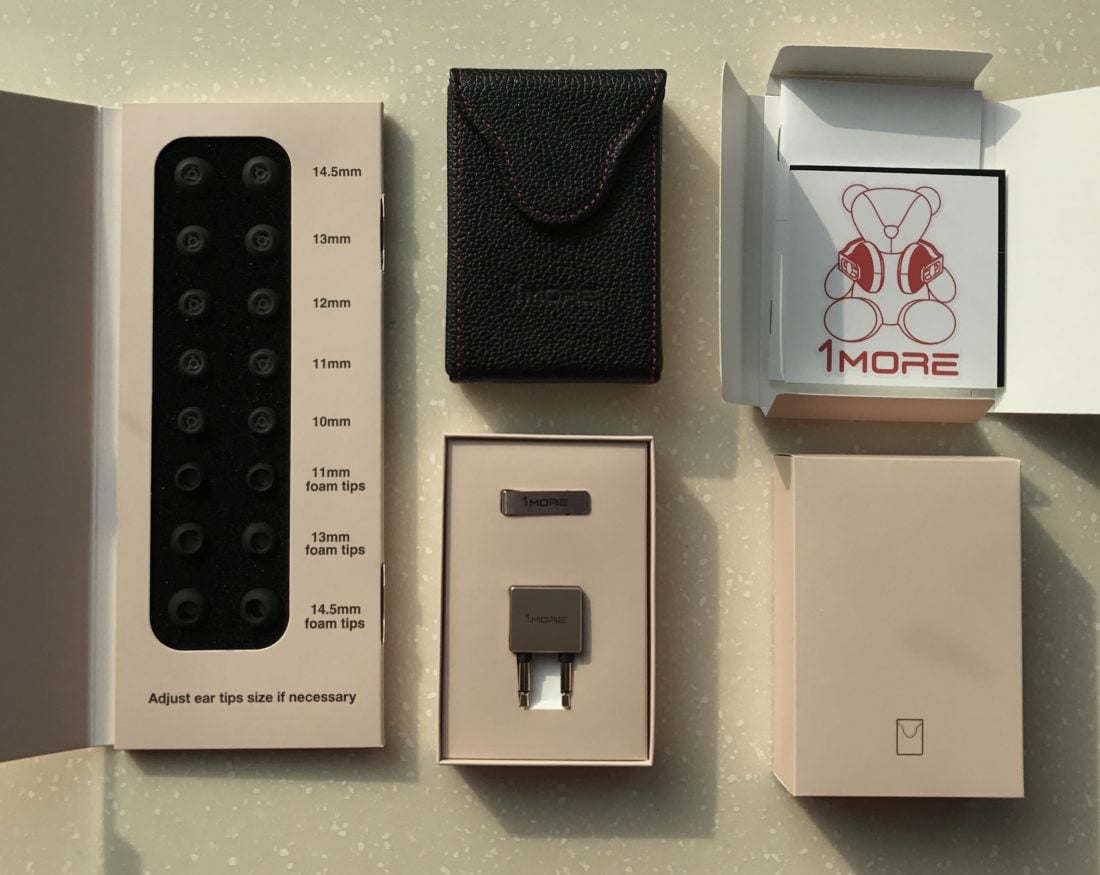
Quick History Lesson: From Earbuds to IEMs
Most early personal audio devices were shipped with earbuds – a miniature speaker driver positioned to sit in the outer ear at the opening of the ear canal. Their sound quality was typically marginal, and many users (including myself) find them uncomfortable as they do not conform to the natural ear shape.
It wasn’t long before the consumer market recognized that IEMs are a better match to the growing number of high-fidelity portable electronics (iPod, cell phone, etc).
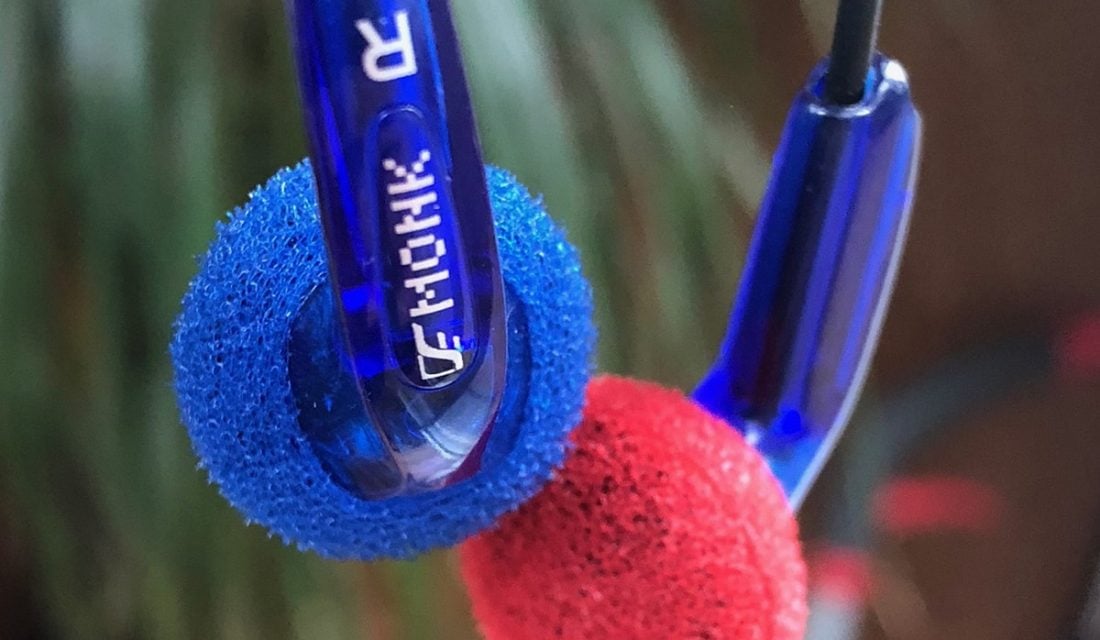
IEMs became an opportunity for manufacturers to improve comfort and sound quality playback from the standard earbud. They provided a universal solution for athletes, audiophiles, and commuters alike, by reproducing high-quality music playback in the ultimate package: portable, private, and isolating.
Mistaken identity
Ironically, many people still view IEMs as earbuds. You will find them seeking help with earbuds tips but actually own IEMs instead. Hopefully, we have cleared up these misunderstandings. There are also others who call ear tips as earphone tips. For consistency, we will use the term – ear tips.
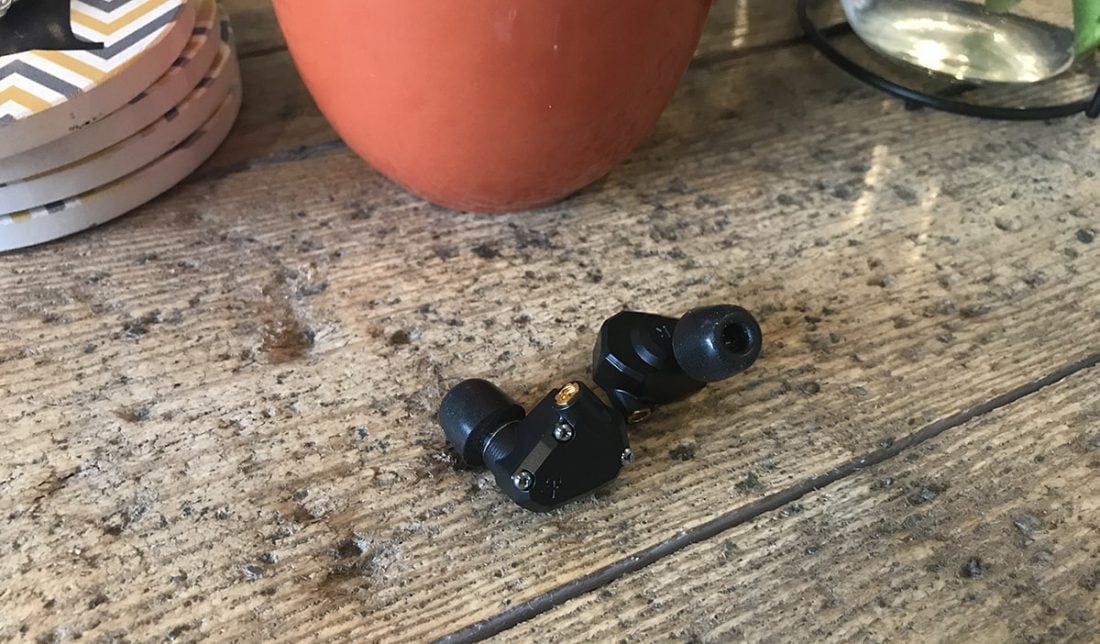
5 Types of IEM Ear Tips
Let’s get down to the first basic concept of ear tips – understanding the different materials and options available.
1) Rubber Ear Tips
Rubber ear tips tend to be the hardest and least comfortable. Those with skin allergies may also trigger a reaction from contact. Due to these limitations, rubber is seldom used nor recommended as an IEM ear tip material.
2) Silicone Ear Tips
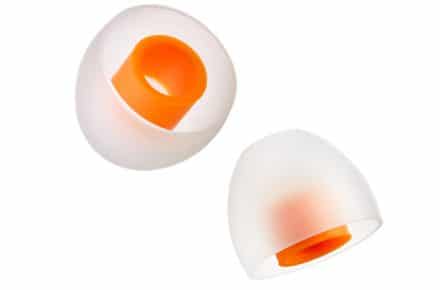
Silicone is chemically inert, thus, unlikely to cause ear irritation. However, some users have reported that silicone ear tips are uncomfortable for prolonged use.
If you are using them for exercise, sweat can make the silicone surface slippery, causing the IEMs to slip or fall out of the ear. However, silicone ear tips are less noise-isolating than foam ear tips. That’s why they present a safer choice for users who need to be aware of their surroundings, especially runners.
On the plus side, silicone can be easily cleaned, offering users a sanitary and long-lived option.
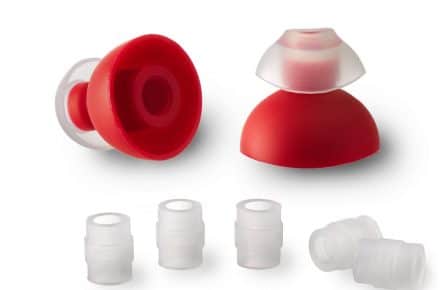
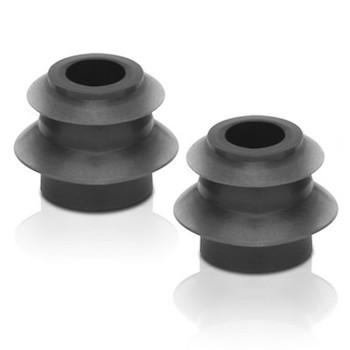
Recommended Silicone Ear Tips
- Campfire Audio Silicone Earphone Tips
- JVC Spiral Dots
- Mee Audio Eartips
- RHA Ear Tips
- Shure Audio EASFX1
- SpinFit Premium Silicone Ear Tips
- Westone Replacement Eartips
3) Foam Ear Tips
Foam ear tips are widely considered the most comfortable option, as they conform to fit the ear canal. They are essentially earplugs with a hole through the center (typically around a stiff rubber tube to allow sound to pass through the foam).
They are known for creating a good seal and fit in the ear, with excellent isolation from external sounds. However, users from enthusiast sites such as Head-Fi often report increased bass (and decreased highs) due to a ‘funneling’ effect into the ear canal.

Comply™ Foam Ear Tips
The Comply foam tips is one of the most popular foam tips in the market.
These memory foam ear tips create an excellent seal that greatly improves the noise isolation of the IEMs. There are certain models of the Comply™ foam tips that even come with a “wax guard” to mitigate the build-up of earwax in the tubes of the ear tips.
Do Foam Ear Tips Affect Sound Quality?
One common perception of foam ear tips is that it affects the playback frequency response. A good seal can increase bass response during playback, but often with a perceived corresponding decrease in treble response.
This could be affected by the shape of the foam ear tip. Most of them are made with a stiff rubber inner tube with foam surrounding the tube.
Careful insertion techniques (squeeze and roll before insertion), backward installation of the ear tip on the IEM, or even cutting excess foam from the tube may help eliminate this issue.
Interestingly, measurements done by Inner Fidelity contradict this perception. Their measured results found that Comply memory foam ear tips do not substantially affect the sound.
The Occlusion Effect
Having a good seal with your ear tips is great, but one peculiarity is not often mentioned. The Occlusion Effect is a phenomenon we experience when talking while our ears are plugged: the unnatural low-frequency sound of our voice that we experience due to bone conduction.
As the ear canal is plugged, sound cannot escape, and it gets reflected to the eardrum causing the low-frequency occlusion effect. This is not a significant drawback to avoid using IEMs, though. If you are new to wearing this type of earphones, it’s something to keep in mind.
Recommended Foam Ear Tips
- Comply Foam Tips
- Alo Audio C-Tips
- Campfire Audio Marshmallow Foam Tips
- Dekoni Audio Bulletz
- InAirs Foam Ear Tips
- MandarinES Symbio Tips
- Shure Audio EAYLF1
- Westone Replacement Eartips
4) Hybrid Ear Tips
Foam stuffed silicone ‘hybrid’ ear tips do exist, but they are relatively rare (bundled with some Sony models) and not as popular as the other types. There are aftermarket versions available if you are curious to try them.
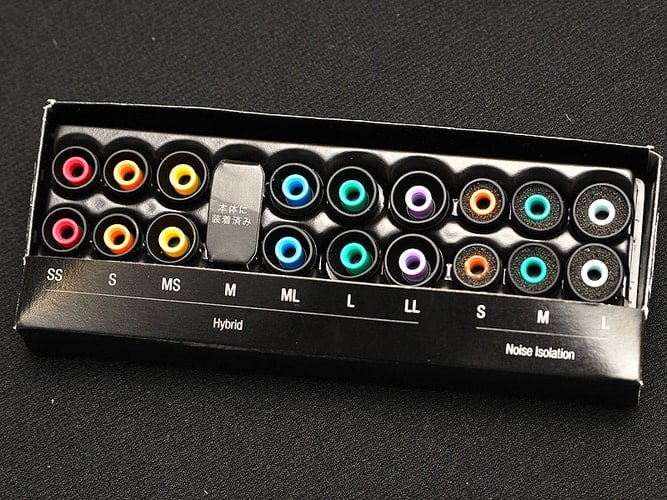
5) Custom Ear Tips
For much less than the cost of Custom IEMs (CIEMs), some companies specialize in creating custom ear tips for your universal IEMs.
Typically, this is done by ordering putty from the manufacturer to create impressions of your ears. Followed by sending the completed impressions, color choice, and your IEM back to the manufacturer. Within a few weeks, you will receive a pair of sweat-proof, hypoallergenic, antimicrobial tips that fit you (and only you) perfectly.
Recommended Custom Ear Tips
How to Find Comfortable IEM Ear Tips
Achieving the right comfort and proper fit can be very tricky, if not almost impossible, for some folks. That’s because ears are unique in a way similar to fingerprints. In fact, even your left and right ear canals are not likely similar in shape and size.

The idea of having ‘one size fits all’ IEM tips is a fantasy.
This is why manufacturers came up with various types of materials for ear tips with varying sizes. From soft and plushy foam to hard and sturdy rubber, including the multi-flanged design of inert silicon.
Unfortunately, you can’t determine how comfortably they’ll actually fit in your ears until you try them.
However, foam ear tips generally achieve the best fit besides being soft and plushy. As you insert them into your ears, they’ll expand to fill your ear canals, achieving proper seal. They also come in a wide range of densities.
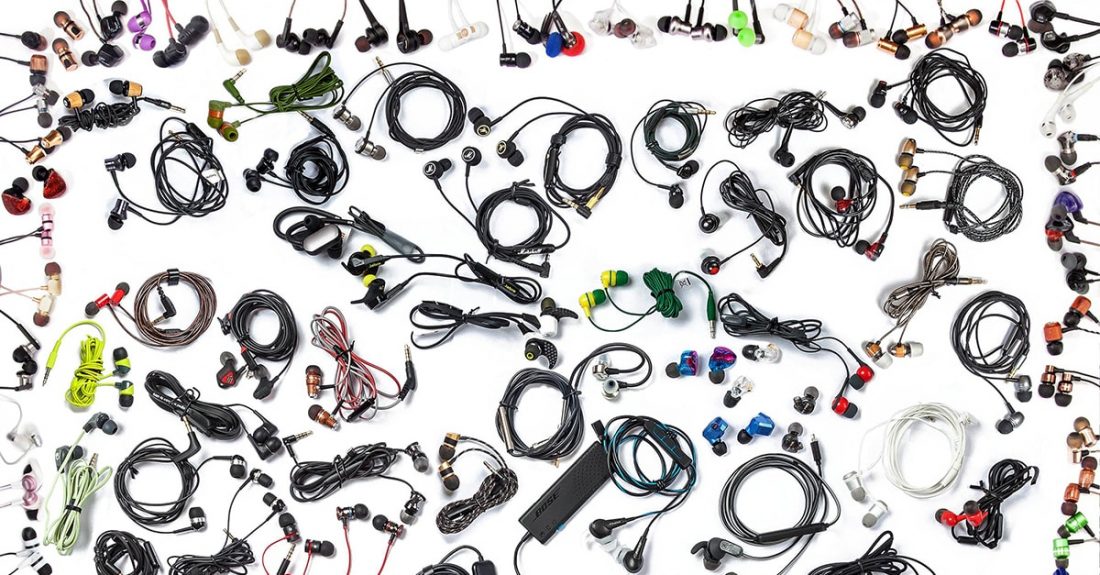
Which IEM Ear Tip Type Is the Most Durable?
Silicone ear tips can last for years, while foam ear tips wear out over time (measurable in weeks or months of usage). Some memory foam ear tips can get somewhat gummy and tacky on the surface. This makes them prone to contamination by earwax and dirt with further use.
Clean hands and ears do prolong the ear tips’ lifespan, but they will inevitably become soiled. Cleaning agents tend to corrode foam ear tips; that’s why water is generally the only recommended substance to use for cleaning. Consider foam ear tips to be consumable and factor in this cost when making purchasing decisions.
How to DIY Your Own Ear Tips
Durability and cost concerns with foam ear tips can be minimized by trying DIY alternatives, typically by cutting bulk disposable closed-cell earplugs to size and making a center hole.
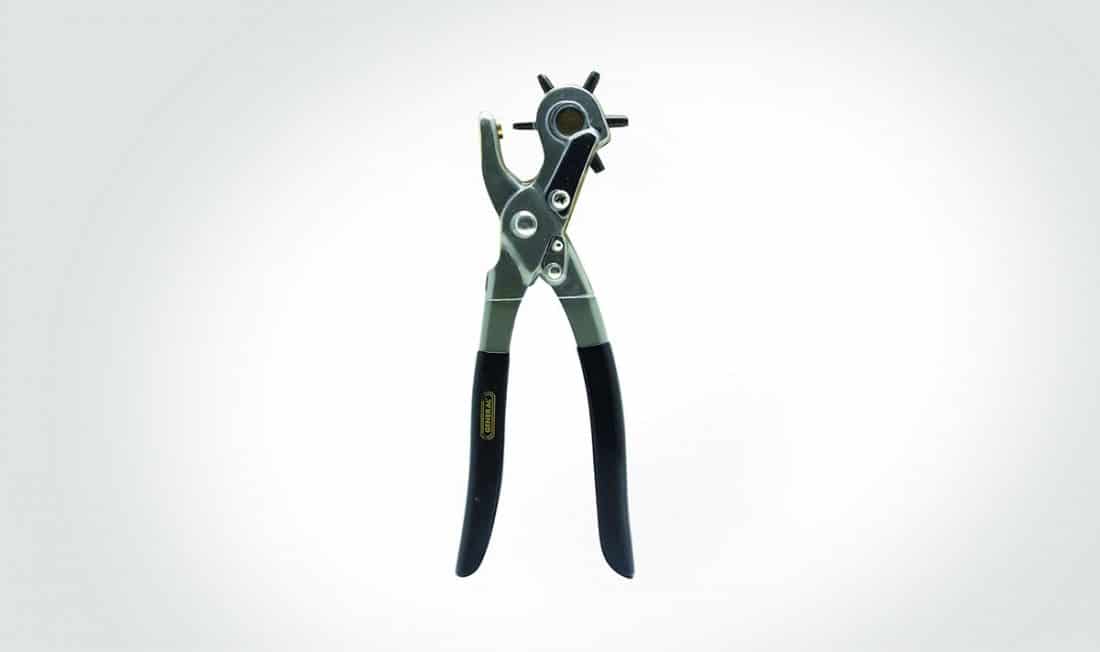
One option to create the center hole is to try a leather hole punch. Alternatively, flattening followed by drilling the earplug can create the hole, but this can be inaccurate. Another solution is soaking the ear tips in water, freezing them, and drilling through the frozen plug. This method requires more preparation but likely yields more consistent results.
If your old worn-out ear tips can’t be recycled for the inner rubber tube, it’s possible to try aquarium tubing and cutting it to size.
Several YouTube videos are available to illustrate some of the aforementioned techniques better.
Recommended Ear Plug Options
- MZOO Sleep Eye Mask
- Honeywell Howard Leight Ll1 Laser Lite Foam
- Fents Quiet Please Ear Plugs
- Mack’s Ultra Soft Foam Earplugs
The Radians Custom Molded Earplugs is a custom DIY option intended for ear protection from shooting, sporting events, construction, lawn care, etc. Yet, DIYers have modified the installation process to use them as IEMs ear tips.
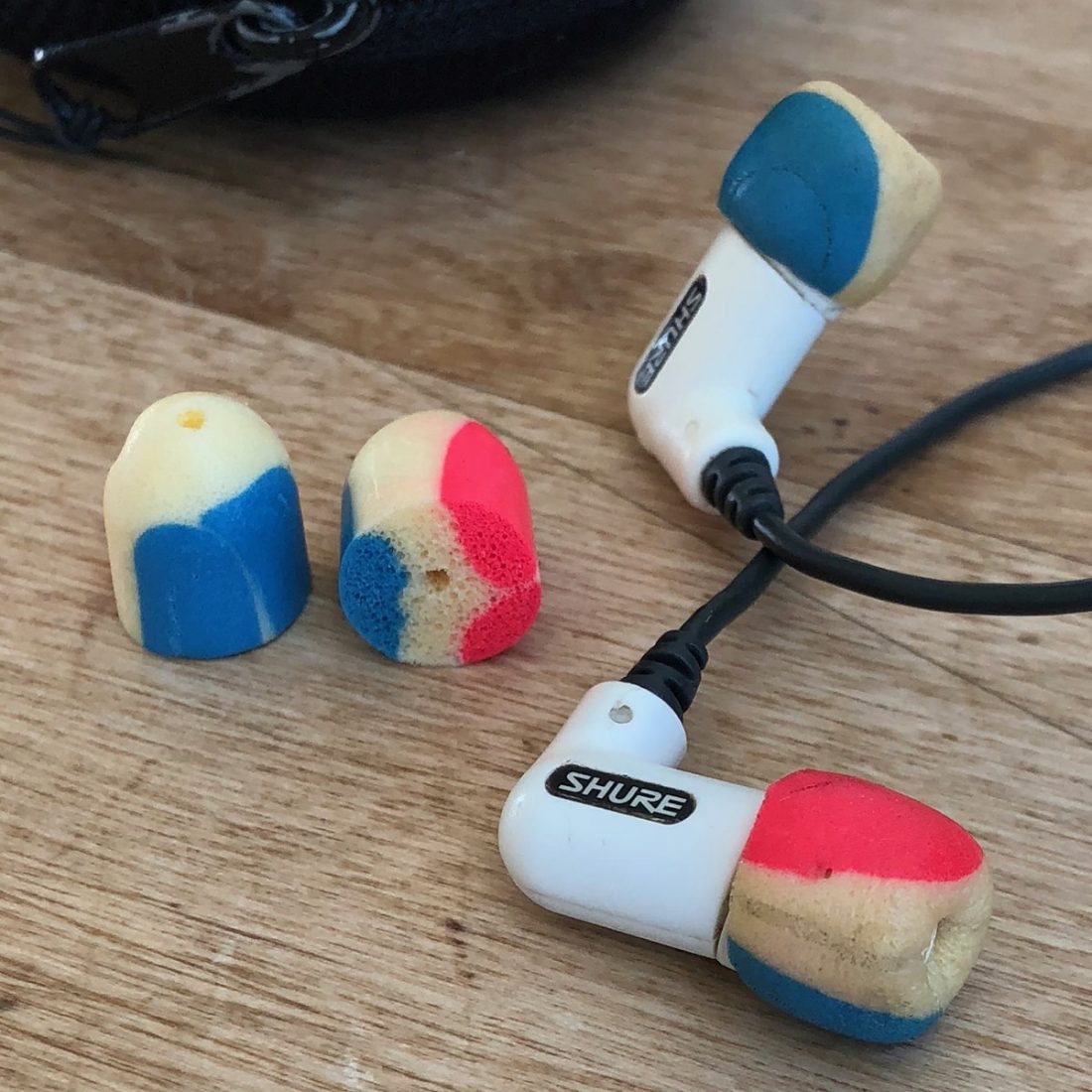
How to Properly Insert Ear Tips
Picking the right ear tips is winning half the battle. The other half requires you to wear them correctly.
While silicone ear tips can be pushed directly into the ear, it may be helpful to try moistening the ear tips before insertion. They may be designed to go deep into the ear canal to achieve the best seal, but if any pain or discomfort is felt they should be removed immediately. The IEMs should feel snug, secure, and comfortable when inserted properly.
Foam ear tips must be inserted like an earplug. This attains the maximum seal, isolation, and sound quality. The rules for earplugs are applicable to ear tips for IEMs. You can follow the steps laid out by the Center for Disease Control (CDC) on the insertion of foam earplugs:
- Roll the ear tips up into a small, thin “snake” with your fingers. You can use one or both hands.
- Pull the top of your ear up and back with your opposite hand to straighten out your ear canal. The rolled-up earplug should slide right in.
- Hold the earplug in with your finger. Count to 20 or 30 out loud while waiting for the plug to expand and fill the ear canal. Your voice will sound muffled when the plug has made a good seal.
- Check the fit when you’re all done. Most of the foam body of the earplug should be within the ear canal. Try cupping your hands tightly over your ears. If the sound is much more muffled with your hands in place, the earplug might not be sealed properly. Take the earplug out and try again.
Are In-Ear Monitors Harmful?
There are some health concerns to be aware of after extended usage of IEMs. For example, wearing IEMs can increase earwax production for some people, and can be linked to an increase in bacteria production in the ear. In addition, with silicone ear tips, pushing them directly into the ear canal could possibly push earwax deeper into the ear.
Users of IEMs should follow regular, medically approved ear cleaning techniques (earwax removal solutions, removal by a physician, etc. – not Q-Tips!).
Besides improved hygiene, clean ears simply hear better; properly cleaning your ears may be the most meaningful audiophile upgrade you ever make.

Due to the naturally warm and moist environment, the ear canal has a higher population of natural bacteria than many other parts of the body. Increased bacteria production in the ear canal is seldom the result of the inserted IEM itself, rather it may be caused by improper cleaning or by dirty fingers and improper handling of the ear tips.
Another recommended practice is to remove IEMs from the ears for a few minutes after a couple hours of use to allow the ears to rest. Rubber tips are the most likely cause of irritation for users with sensitive skin or allergies.
Hearing Damage due to Volume
Any sustained sound over 85 decibels (dB) can cause hearing loss, and many IEMs are capable of delivering in excess of 125 dB inside the ear canal (note: around 130 dB causes pain). At or above 130 dB, damage may be reversed in 1-2 days. However, if the inner-cochlear cells are damaged, damage to the hearing would be permanent. Remember that lower levels (85 dB and up) will cause damage with continuous exposure.
- 85 dB – 8 hours until hearing damage.
- 88 dB – 4 hours.
- 91 dB – 2 hours.
As per above, the time until the damage is done is cut in half with each 3dB increase in volume. This means that 115dB causes damage to the ear in 30 seconds. Sustained loud music is one of the common causes of hearing loss, as we tend to listen at loud (but not painful) levels for extended periods, especially our favorite songs or albums.
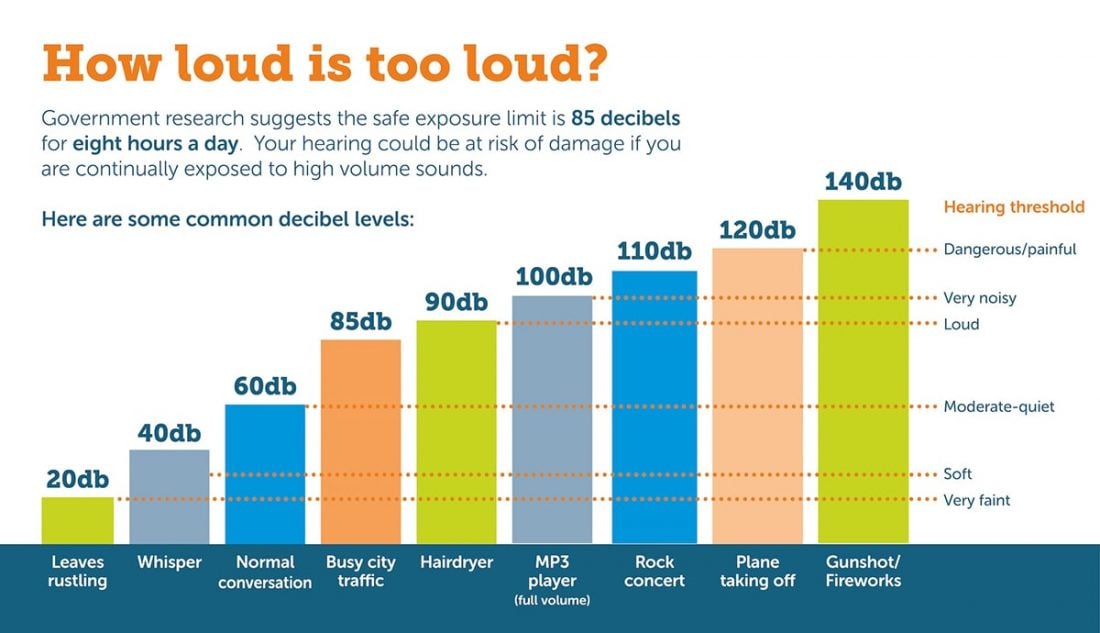
Conclusion
Finding the right ear tips for your IEMs is a matter of personal preference and the individual’s unique fit. There is no magic bullet or one-size-fits-all solution. Most often, users suffer through using the wrong ear tips before either abandoning IEMs for headphones or by luck, eventually finding a better match for them.
Following the “tips” in this article should set you up to properly (and safely) select and use the ear tips that best fit your ears.

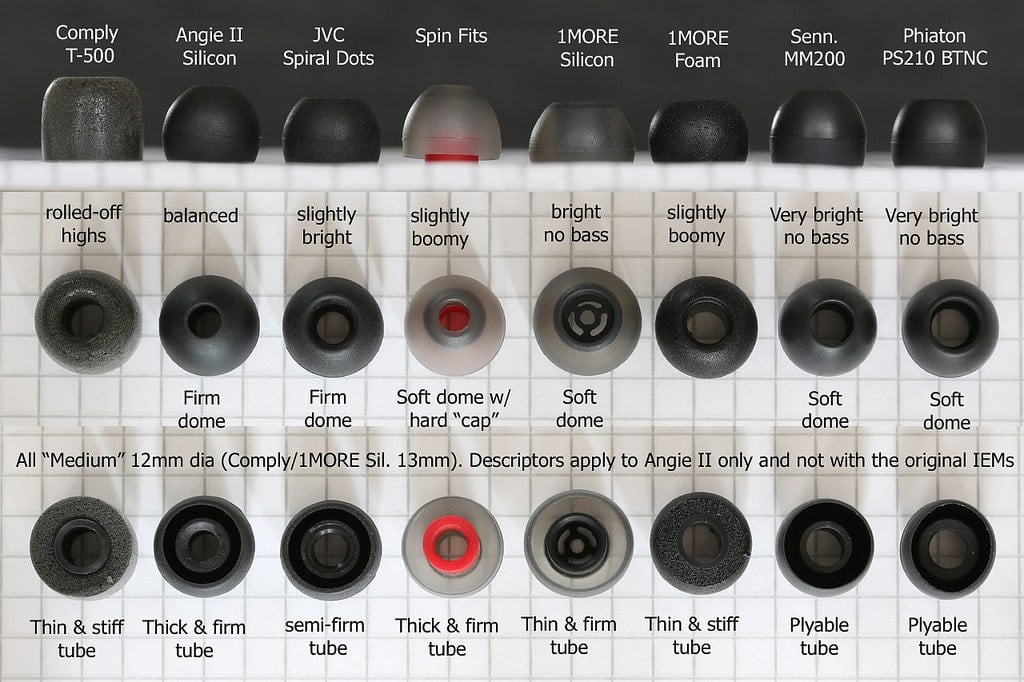



Most early personal audio equipment was shipped with lightweight headphones, not earbuds. Thr first thing that came with earbuds was probably the iPod.
Greetings! I currently using “memory” foam eartip and it always gets dirty with my (sorry) ear liquid. Does someone knows how to clean the memory foam eartip? Or just throw it away? Thanks in advance.
Thats why foam eartips suck they are ruined after about a month of regular use. You need to buy new ones at that point.
I took my foam sleeves off and put them in my pocket and accidentally washed them in the washer and realized when I put them in but it was too late anyway I dried them out and they’re as good as new and more importantly clean
did they continue working fine afterwards? And how long did they last and would u recommend them?
Does anyone know where you can still buy rubber earbud tips? I know they’re not recommended, but I like them. I have tactile issues and I hate silicone and foam. Rubber are the only ones I find comfortable, but I can’t find anywhere to buy them.
Thanks for the explanation very informative about ear
Thanks Trav/Headphonesty! This was very informative. Personally, I love foam ear tips the best.
Hey, is there any significant difference between memory foam and sponge? I found one from Moondrop using sponge material. What do you think about it?
I have silicone earbud tips that are for buds WITHOUT sound pipes. The tips do not have the inner center piece to hold the tip onto the bud. I’ve lost one and cannot find a replacement to save my life. Any suggestions?
The earbuds are Goodsound found here https://www.walmart.com/ip/Wireless-Earbuds-for-Men-Goodsound-Bluetooth-Headphones-5-0-for-Gym-Built-in-Dual-Mic-Can-Use-Alone-L-R-Earpiece-Up-to-16/774640757
You weren’t kidding about an ‘ultimate guide’ ????. Thank you.
All great advice but hardly ever gets a look is the size of the hole that fits the tips to the drivers on the earphones, I bought a 10mm driver true wireless earphones which have great sound but none of my foam buds fit, and the cost of memory foam tips between £5-£20 get a pair that don’t fit the earphones then it’s a waste. It needs to be clear how big the tip holes are so you know your not going to buy a wrong fit.
Very good point! Some consistency or standardization in the Wild West of IEM world would be appreciated for sure!
I only use Comply memory foam tips, and thankfully they have a “system” in place. Size 100 is for Westone/Shure and are meant to fit 1mm nozzles. I just bought Kinera/Celest PhoenixCall, and I found out ahead of time what size the nozzle was. It’s a whopping 6.5mm 😮 But the Comply Size 600 fit those perfectly, so the Size 600 is for 6+mm nozzles.
I also just bought some Aful Acoustics Performer 8 IEM’s and they have a 5.8mm nozzle, so Size 500 Comply fit those.
So each “Size” corresponds to a millimeter size. Size 100 is for nozzles around 1mm (and that’s the SMALLEST Comply make), Size 200 for 2mm nozzles, Size 500 for my 5.8mm P8, Size 600 for the 6.5mm PhoenixCall nozzles.
While I was waiting for my Size 500 tips to come for my P8 IEM’s, i used the Size 600 from my PhoenixCall. It did the job in a pinch, but the Size 500 were a perfect fit. So making sure you have the right tip with the correct nozzle size for your IEM’s is DEFINITELY crucial!
Spinfit/Azla/Dunu/etc are all around the same size for the nozzle, but being silicone, they can easily stretch to fit a bigger nozzle than usual. The Comply don’t do that as well. But I cannot stand anything BUT Comply memory foam tips, so that’s what I use exclusively.
Another major benefit of the Comply Memory Foam tips is that they come with a “waxguard/sweatguard/Techdefender” layer that prevents earwax and dirt and sweat from getting into the IEM’s nozzle. My P8 and PhoenixCall DON’T have a mesh cover for the nozzle, so even if I wanted to use the silicone tips I have (a lot of the big names but never get used), I’m petrified to because of earwax getting into the nozzles! But not ALL of them have those guards, so pay close attention when buying them if you want any kind of earwax filter protection!
Anyway, hope that helps some and further explains the Comply tips, their sizing system and the wax/sweat/Techdefender protection they have.
Thanks for the info!
i hate silicone or foam tips, and also the earphones go deep into my brain. just use standard sony or apple designs till 2015. even 2001 sony Walkman earphones was better. stop trying to do something different. looks cheap, uncomfortable, unhealthy.
What/who are you talking to or about?
I have Final E500 IEM’s and found that the buds wouldn’t stay in, even for a minute. I tried the next size up each time and found they fell out too. I got an e-mail reply from Final Support suggesting trying the smaller tips and I immediately thought how silly, the smaller ones will fall out even easier surely? What a surprise then to find they were right: the smaller silicon tips, pop or lock inside the ear cavity – the larger tips being too big for this to happen. I hope this helps others. Very good sound by the way for budget devices.
Yes, the smaller silicon tips are often a better option for that reason. BUT, it’s very important you get one’s made specifically for your earbuds. Otherwise you could end up leaving a silicon tip in your ear canal.
This almost happened to me when I thought that they were all basically the same. Now I pay the extra few dollars to make sure that the ear tips I get are designed for the earbuds I have.
Thomas,
I had to take a trip to urgent care to solidify that lesson. Embarrassing but a good lesson to burn into the brain.
ADDENDUM: When I say designed for your earbuds, I don’t just mean the 4-6mm, etc. No, I mean the specific way that the tios lock onto the earbuds.
Believe it or not it can be too tight wherein it locks onto the IEM. The combination of my anatomy and the guage of the IEM at its outer auditory canal placement caused it to squeeze off into my outer canal. I’m not going to call out the tip because the problem wasn’t my anatomy or the IEM or the silicone tip. It was the combination of all three that sent me on my jaunt to Urgent Care.
Absolutely. I fell prey to this when I ordered some Xcessor tips that claimed to fit nozzles between 4 – 6mm. They worked with 5mm nozzles with a bit of perseverance , but no way would they flex enough for 2 pairs of my IEMs with 6mm nozzles.
>In-Ear Monitors (IEMs), are earphones intended to fit into the ear canal for personal music listening.
Uhm… No.
In-Ear Monitors are Earphones intended for Monitoring. That is why they are called In-Ear _Monitors_
They are not designed for personal music listening. What you mean is called In-Ear Earphone.
Most earphones that people calle IEM can not be used for monitoring, so they are not monitors and hence they are not IEM.
Rule of thumb, if you can’t use them for monitoring, they are not monitors and not called IEM.
IEM is the adopted industry-wide standard nomenclature for consumer in ear phones for listening to music, regardless of what you believe to be correct/incorrect.
ie: Wikpedia
In-ear monitors (IEMs) are devices used by musicians, audio engineers, **audiophiles** and music band members to listen to music or to hear a personal mix of vocals and stage instrumentation for live performance or recording studio mixing.